Jacob Rees-Mogg appears to have sunk even lower – literally. During probably the most important Commons debate in modern history, Rees-Mogg could be seen lolling insolently on the front benches like Kevin the Teenager, if Kevin the Teenager wore double-breasted suits at least 18 sizes too big for him. When challenged on his slouching by Caroline Lucas – who called his body language “contemptuous” – the MP did not sit up but smirked and adjusted his glasses, because, folks, that’s just the kind of guy he is.
It’s true that politicians sometimes lean back on the benches to listen to the speakers positioned at the end of the row, but the House was not at all noisy when Rees-Mogg was smeared across the seat like a stain. The picture quickly went viral and his disrespectful reclining may well come to be a defining image of this tumultuous and, in certain respects, unprecedented period in Britain’s politics.
The reclining figure is, of course, an acknowledged motif in art (particularly nude white women – more on this later), and this is why it was so easy for people to photoshop Rees-Mogg into various works. Here’s a rundown of some of the best or most iconic recliners in art, whether painting, sculpture or photography.
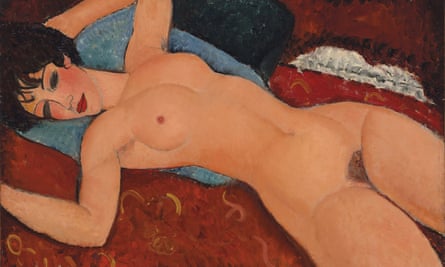
I could have picked multiple Modigliani reclining nudes because there are many, but my personal favourite is the one most often referred to as Reclining Nude 3, which may or may not hang above my bed. The original (which does not hang above my bed) was sold for $170.4m in 2015. Pretty much all of them are just called Reclining Nude, which is confusing.
Modigliani has come in for a lot of feminist criticism, because of the exaggerated way he painted the bodies of women. Whereas my take is that in this era of body positivity, why are we shaming his models for their brachiosaurus necks and hips like the crashing waves of surfers’ dreams? He also included pubic and underarm hair in his paintings, which was subversive and shocking at the time. This isn’t to say he also wasn’t a total misogynist who treated the women in his life badly, because he was and he did.
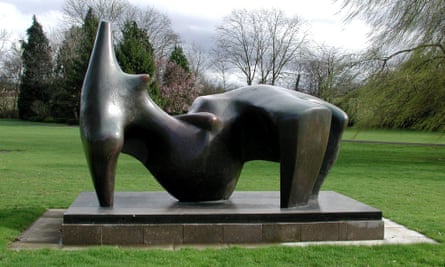
One of Britain’s greatest-ever sculptors, Henry Moore has a lot of works of reclining nudes. Angels (1979), was in show a few years ago at the Yorkshire Sculpture Park. There is also Reclining Figure (1929), which one might not immediately recognise as a Moore work; the amusingly titled Reclining Woman: Elbow (1981) and his Draped Reclining Figure (1952-53) (which looks like a woman in labour) and Draped Reclining Woman (1957-58), which is altogether less stressful. But my favourite is actually Reclining Figure (1969–70), pictured above, because it looks like someone without a head breakdancing.

Henri Matisse’s Odalisque Couchée aux Magnolias was once owned by David and Peggy Rockefeller before selling for around $80m in 2018, when the Rockefellers notoriously fell on hard times*. An odalisque was a concubine, and a popular subject for artists, who essentially exploited them by making them pose on the couch every single time they entered a room with a couch in it. The odalisque nude is one of the most misogynist – and one of the most popular – tropes in art.
(*The Rockefellers have not fallen on hard times.)
Thanks to @GroenMNG for proving the golden ratio can be applied to this pic: pic.twitter.com/Fa1EYSV6ih
— Roland Hughes (@hughesroland) January 1, 2016
Joel Goodman’s photograph of 2015 New Year’s Eve revelations in Manchester went viral and was compared to a Renaissance painting with the golden ratio typical of Leonardo Da Vinci’s work superimposed on it to prove the point. The star of the picture was the gentleman reclining drunkenly in the street, who was then Photoshopped into various famous art works and humorous settings. This remains a key example of the internet at its best.
Goodman was humble about his blockbuster shot, telling the Manchester Evening News: “Mostly, a shot like that is just about being in the right place at the right time. I just happened to be in the right spot.”
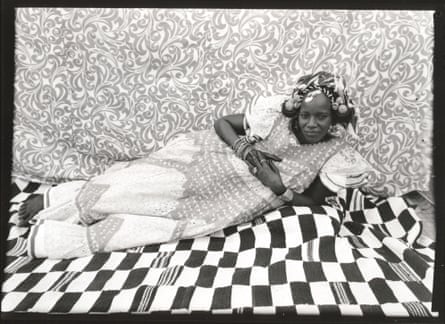
Seydou Keïta was a Malian photographer who developed an interest in photography when his furniture-maker father gave him a Kodak box camera with just eight snaps left on the roll. His work through the 1940s and 60s documents Malian society, and his rich portraiture of everyone from shopkeepers to politicians has resulted in posthumous recognition, including at the Met and Guggenheim. Nudes of white women dominate in art (you may have noticed) but Keïta’s subject is fully clothed, with a focused look and bold clashing patterns, which mirrors the pose West African women often adopt when comfortable and entertaining friends at home.
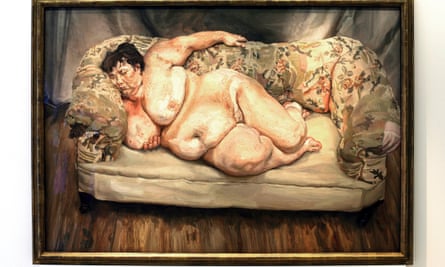
One of his most well-known paintings, Lucian Freud’s Benefits Supervisor Sleeping shows Sue Tilley “sleeping”. Tilley is an exceptionally interesting person who spent the 1980s partying hard at infamous club night Taboo. She was in her 30s when Freud painted her in 1995 and she features in other works by him. Art dealer Brett Gorvy described Benefits Supervisor Sleeping as: “Recognised internationally as Freud’s masterpiece and proclaims him as one of the greatest painters of the human form in history, alongside Rembrandt and Rubens.”
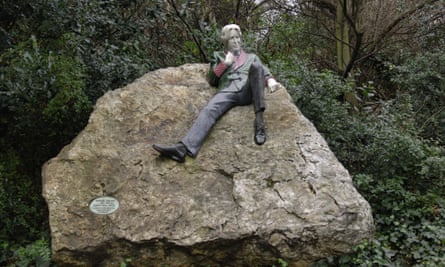
Oscar Wilde was a keen recliner, as perhaps the most famous photograph of him attests. As such, the rather quirky statue of him in Merrion Square, Dublin, has him leaning back on a rock, dressed in his best. (It’s part of a number of sculptures in the square designed by Danny Osborne in 1997.) It’s arguable that the smug look on Wilde’s face rivals that of Rees-Mogg’s in the Commons.

Finally, perhaps the most famous example of a reclining figure in art is Adam lying back and touching the hand of God in the famous fresco on the ceiling of the Sistine Chapel. Michelangelo’s The Creation of Adam took four years to complete between 1508 and 1512 and depicts the narrative of the Book of Genesis. It is one of the most replicated images in the world and very available on cushions, mugs and key rings on Etsy. Adam’s position here is also very similar to when you can’t be arsed getting up, so you ask your dad to pass you your phone.
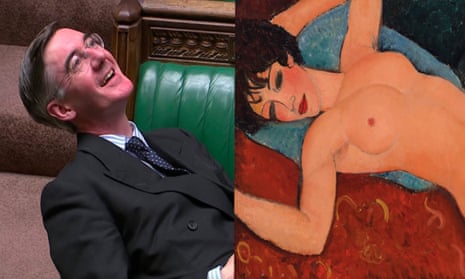
Comments (…)
Sign in or create your Guardian account to join the discussion